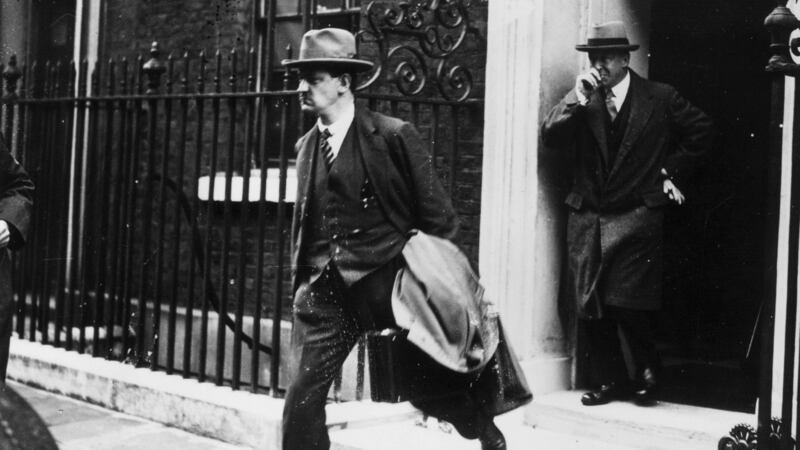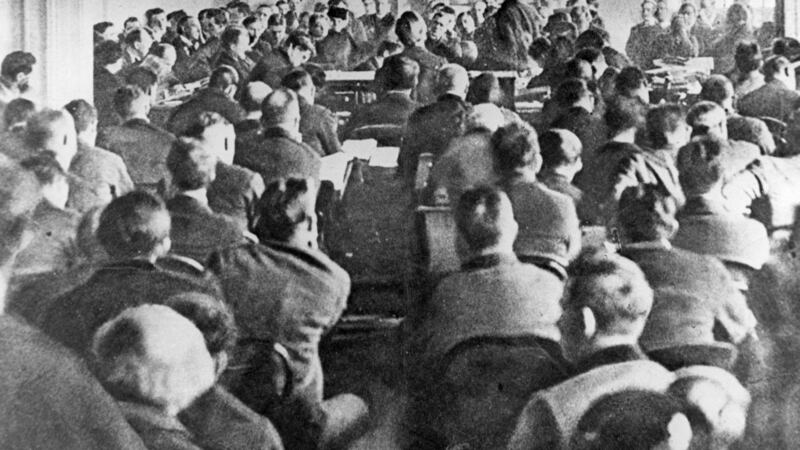The ongoing Brexit process has attracted many a disparaging comment in Ireland about why Britain would want to leave such a grand and magnificent union. However, it was just less than a century ago that Ireland likewise chose to leave a similarly significant union of nations.
There are a number of comparisons that can be drawn between the Irish withdrawal from the United Kingdom in 1922 and the impending Brexit of 2019.
First, the British electorate’s decision to leave the EU was inspired by a nationalist sentiment and a desire to restore national sovereignty and parliamentary democracy. So too, Dáil Éireann chose to leave the largest trading bloc in the world both for nationalist reasons and to re-establish sovereign power.
Second, this mutual desire to leave a union provoked comparable sentiment within the ruling elites of the separate unions, with some happy to be rid of a meddlesome constituent, but others fearful of the ramifications for their respective union in the years to come.
Third, it is also quite conspicuous that the Border on the island of Ireland remains just as much a difficult issue to resolve in the Brexit negotiations as it did in the debates over Ireland’s independence.

So, although it is difficult to fathom Irish nationalists and British Brexiteers as likely bedfellows; and, granted, they would be unlikely to share a matrimonial bed for too long were they forced into an unholy alliance, surprisingly, the two sides have plenty in common.
While there is much contemporary debate about the consequences of Brexit for Ireland, the Eirexit of 1922 was of far greater magnitude. In spite of this, it is a puzzle of Irish political history that the Anglo-Irish Treaty of 1921, which bestowed dominion status on Ireland, and is the State’s founding document, has been the subject of so little attention.
The Treaty is not celebrated in this country, and it is remembered more for its concessions on Irish sovereignty than for the achievement of substantive independence. With the centenary approaching, the time is ripe for a reappraisal of the Eirexit and Treaty of 1921.
The Treaty itself is a remarkably short document, at 1,800 words not much longer than the average university essay. It granted Ireland “the same constitutional status in the Community of Nations known as the British Empire as the Dominion of Canada, the Commonwealth of Australia, the Dominion of New Zealand, and the Union of South Africa”. It also established the name of the new jurisdiction as the Irish Free State.

Just as now, the Border seemed an intractable issue, and rather than solve the issue of the “dreary steeples of Fermananagh and Tyrone” that had bemused Churchill, the Treaty left the Border unresolved. Article 12 proposed a boundary commision that would decide on the Border “in accordance with the wishes of the inhabitants, so far as may be compatible with economic and geographic conditions”.
While there were a few other controversial articles, such as Article 4 requiring an oath of fidelity to the British monarch, the Treaty, for a document that was supposedly to settle the two countries’ troubled relationship, says very little. Just as with Brexit, much of the finer detail was left to government officials to resolve.
One key difference from Brexit is that the Irish withdrawal was not put to a public vote. Instead, it was left to the Dáil to decide on the fate of the Treaty.
This was a remarkable decision to bestow upon a group of ill-experienced and, in many cases, ill-knowledged politicians. Many of them were recruited by Michael Collins and Harry Boland, and with the second Dáil being elected entirely unopposed, it is fair to say that it was more radical than the electorate as a whole.
The Dáil debated the Treaty for 15 days over December 1921 and January 1922. 250,000 words were spoken, with almost all deputies contributing. Such was the bitter nature of the debates that some sessions were held in private, their transcripts not being released to the public until the 1970s.
Where initially it was believed that a majority of the Dáil favoured following its President, Éamon de Valera, in rejecting the Treaty, there was a change in the mood of deputies over the weeks of debate. On January 7th, the Dáil voted narrowly, by 64 votes to 57, in favour of accepting the Treaty.
This was a critical moment in Irish history. Had the Dáil rejected the negotiated settlement, David Lloyd George, the British prime minister, is reputed to have threatened “terrible and immediate war”. Undoubtedly down to the bare bones of its resources, the revolutionary nationalist movement might have been wiped out by a full-scale British onslaught.
A rejection of the Treaty might also have resulted in a different type of civil war on the island, not between pro- and anti-Treatyites, but a more sectarian conflict, between nationalist and unionist, Catholic and Protestant forces.
The path of Irish history could have been very different. So, while it is remarkable that the Treaty itself has long been ignored, what is more remarkable is that the parliamentary debates over its approval have likewise received scant attention.
This is the focus of a collaborative effort of historians and political scientists that we have recently published as The Treaty: Debating and Establishing the Irish State.
In the words of the late academic Peter Mair, in the beginning was the Treaty, and to understand the Irish political system, a greater comprehension of this document and its importance is required.
Unlike the clear social divisions in the UK that have been exposed by Brexit, there were no apparent differences between pro- and anti-Treatyites in Ireland. Few held it in great esteem, and yet it proved controversial enough to split the Irish political class and engender a Civil War.
Our book examines the reasons for the Treaty split, with a particular emphasis on the parliamentary schism. We find that there was little to divide the two sides, which makes the conflict all the more confounding.
As we approach the anniversary of these momentous events, this is something that Fianna Fáil and Fine Gael, the inheritors of this divide, might wish to contemplate.
Liam Weeks lectures in University College Cork and Mícheál Ó Fathartaigh is a research officer in the Rural Economy and Development Programme at Teagasc. The Treaty: Debating and Establishing the Irish State is published by Irish Academic Press

















